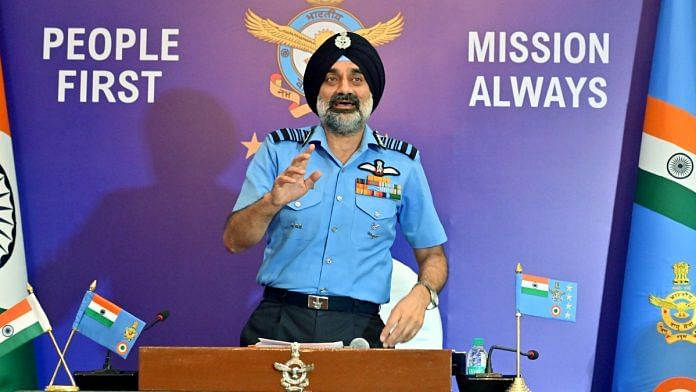New Delhi: In a scathing remark on the snail-paced delivery of Tejas fighters by state-run Hindustan Aeronautics Limited (HAL), Indian Air Force (IAF) chief Air Chief Marshal A.P. Singh said Tuesday that “technology delayed is technolgy denied”. He lamented that the HAL has yet to deliver the first 40 Tejas fighters, deliveries of which started in 2016.
He called for advanced manufacturing processes and the need to rope in private players, saying fear of losing orders should be the norm.
“Production agencies have to invest in their advanced manufacturing processes so that the speed can increase. Upskilling their manpower and whatever they do, the scale of the production has to go up. Tejas, we started inducting in 2016,” he said, adding that the history of Tejas should be seen from 1984 onwards when the aircraft was conceived.
“First aircraft flew in 2001—17 years. Then, the induction started another 15 years later—2016. Today, we are in 2024, I do not have the first 40 aircraft also. This is the production capability. We need to do something. I am very convinced that we need to get some private players in. We need to have competition. We need to have multiple sources available so that people are wary of losing their orders. Otherwise, things will not change,” he said.
The Chief of the Air Staff also said increased militarisation by China and Pakistan on the borders was a security concern for India, as he highlighted India’s level of preparedness.
Singh said the world was in a precarious position today, dominated by conflicts and contests. India, he added, had its own concerns on the western and northern borders due to heightened militarisation by the neighbours. “China is investing heavily in its air force, the recent unveiling of its new stealth aircraft is a case in point,” he said, referring to the sixth-generation fighter presented by China on 26 December.
India is still focused on its fifth-generation fighter program, the Advanced Medium Combat Aircraft (AMCA), a programme which is still under the design and development stage.
China has nicknamed its fighter aircraft the “White Elephant”, also known as J-36.
Speaking at the 21st Subroto Mukerjee Seminar, Singh added if India’s vision was to be a developed nation by 2047, “to find a place in the world,” the aerospace sector would be a major contributor towards that goal.
The IAF chief talked about atmanirbharta (self-reliance) and how the force had given it a push, but warned that “R&D (research and development) loses its relevance in case it is not able to meet time-lines. Technology delayed is technology denied”.
The force, for some time now, has faced delays in delivery of Light Combat Aircraft (LCA) Mk1A. This is due to delays in the supply of General Electric-manufactured F-404 engines.
The hold-up in manufacturing of the aircraft comes at a time when the IAF is suffering from depletion of fighter squadrons. It requires 42 squadrons, but only has 30.
Singh added there had to be an increased aptitude for acceptance of risks involved and the failures of R&D. “There is an amount of risk inherent to R&D, and we should absorb it to a certain degree. A greater leeway should be available to researchers, there may be failures, what is important is that we learn from them and move on.”
He said atmanirbharta would come at a cost and that everyone should accept it. “We may have to spend more and buy at a higher rate if required, amortising the R&D part and limited numbers will push the cost up, but will give the much-needed self-reliance.”
(Edited by Tikli Basu)






